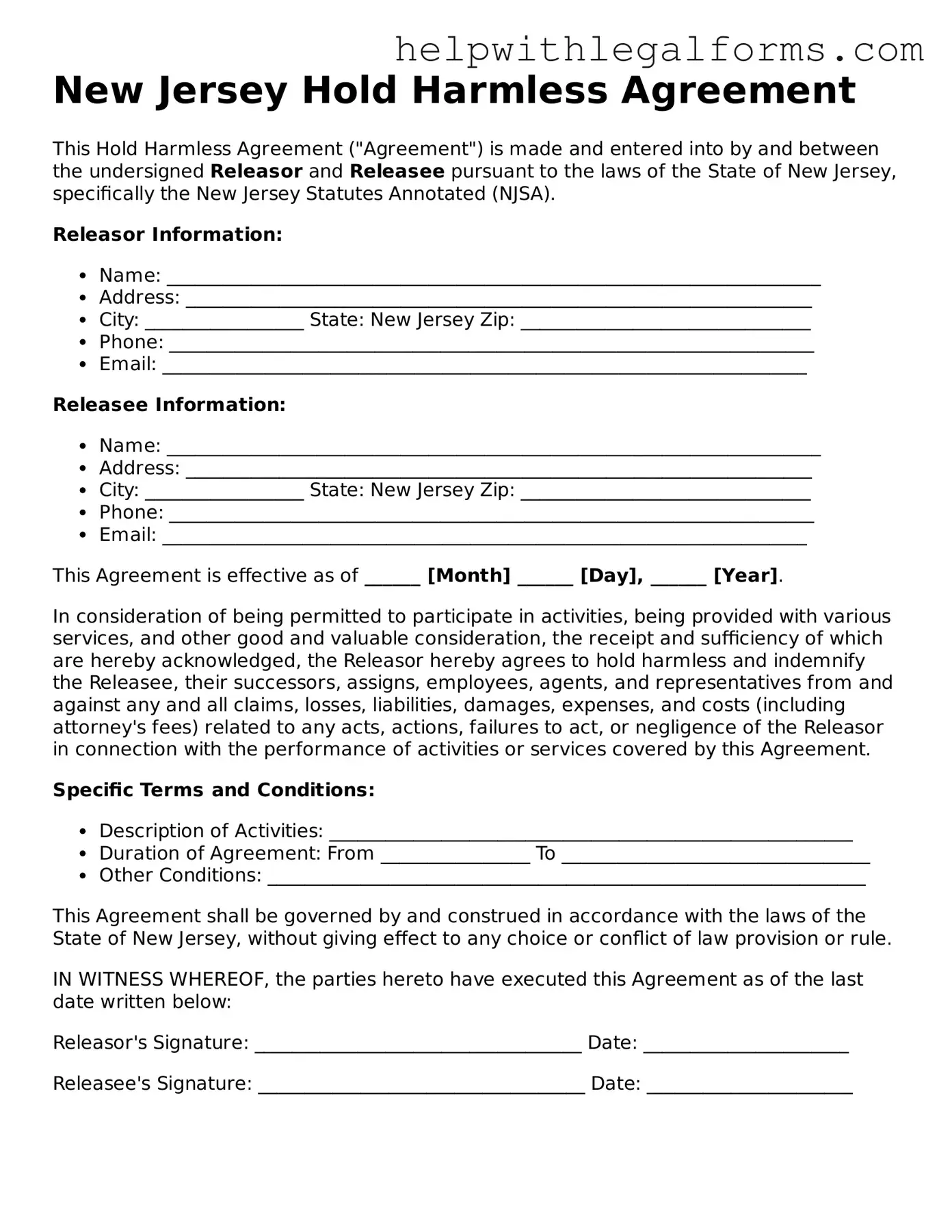New Jersey Hold Harmless Agreement
This Hold Harmless Agreement ("Agreement") is made and entered into by and between the undersigned Releasor and Releasee pursuant to the laws of the State of New Jersey, specifically the New Jersey Statutes Annotated (NJSA).
Releasor Information:
- Name: ______________________________________________________________________
- Address: ___________________________________________________________________
- City: _________________ State: New Jersey Zip: _______________________________
- Phone: _____________________________________________________________________
- Email: _____________________________________________________________________
Releasee Information:
- Name: ______________________________________________________________________
- Address: ___________________________________________________________________
- City: _________________ State: New Jersey Zip: _______________________________
- Phone: _____________________________________________________________________
- Email: _____________________________________________________________________
This Agreement is effective as of ______ [Month] ______ [Day], ______ [Year].
In consideration of being permitted to participate in activities, being provided with various services, and other good and valuable consideration, the receipt and sufficiency of which are hereby acknowledged, the Releasor hereby agrees to hold harmless and indemnify the Releasee, their successors, assigns, employees, agents, and representatives from and against any and all claims, losses, liabilities, damages, expenses, and costs (including attorney's fees) related to any acts, actions, failures to act, or negligence of the Releasor in connection with the performance of activities or services covered by this Agreement.
Specific Terms and Conditions:
- Description of Activities: ________________________________________________________
- Duration of Agreement: From ________________ To _________________________________
- Other Conditions: ________________________________________________________________
This Agreement shall be governed by and construed in accordance with the laws of the State of New Jersey, without giving effect to any choice or conflict of law provision or rule.
IN WITNESS WHEREOF, the parties hereto have executed this Agreement as of the last date written below:
Releasor's Signature: ___________________________________ Date: ______________________
Releasee's Signature: ___________________________________ Date: ______________________
